
Research Findings - Australia
We have been retrospectively examining data obtained from parents of children who have autism/developmental delay, to see if there is any basic differences in the Biochemistry between countries. We have separated out the Hair Metals Test Analysis (HMTA) data and Organic Acids Test (OAT) data, and present the findings in graphical form below. Projected rates of autism in Australia

HMTA
Previous data has shown that in Modern Day Autism, the major precipitating factor is functional B2 deficiency due to deficiencies in Iodine, Selenium and/or Molybdenum, all of which are required to activate vitamin B12. We present this data below. As can be seen all of the children were deficient in one or more of Iodine (<1.0 ppm : 15/18), Selenium (<1.0 ppm 14/19), or Molybdenum (<0.08 ppm: 13/19), with dual deficiencies being common. Hence, the data would suggest that these children would have functional vitamin B2 deficiency. The observation of Iodine deficiency in the children is consistent with data on the known Iodine deficiency in mothers in Australia (Stoeva etal, 1997; Delange, 2002; Møllehave etal, 2022). The observed Selenium deficiency has also been reported for much of Europe, including Bulgaria (Alehagen etal, 2015).

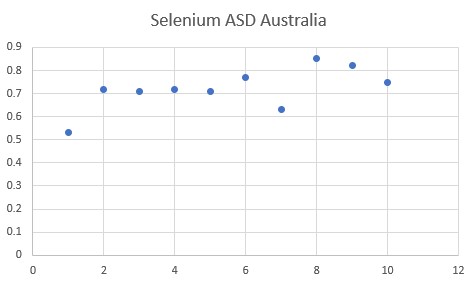
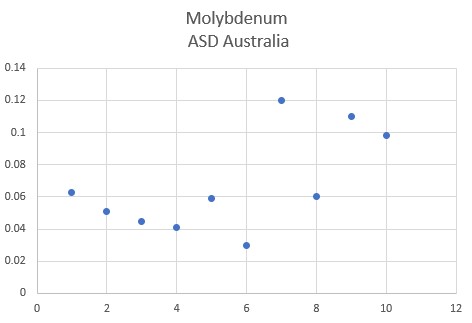
OAT
Previous data has shown that in Modern Day Autism, the major precipitating factor is functional B2 deficiency due to deficiencies in Iodine, Selenium and/or Molybdenum, all of which are required to activate vitamin B12. This in turn can be seen in alterred metabolism in OAT.
We present this data below.
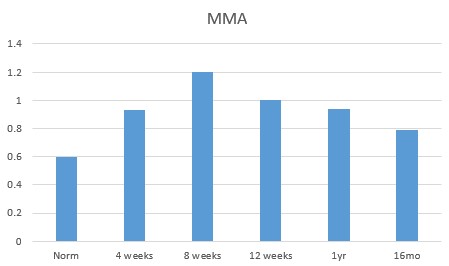
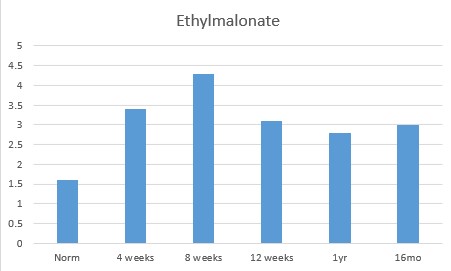
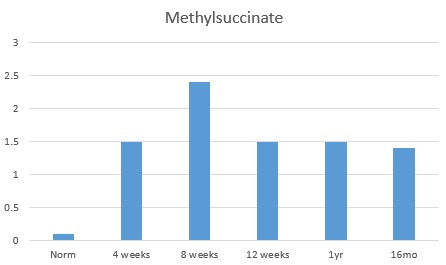
All children had functional deficiency in Adenosyl vitamin B12, with elevated MMA being common and elevated methylsuccinate universal.
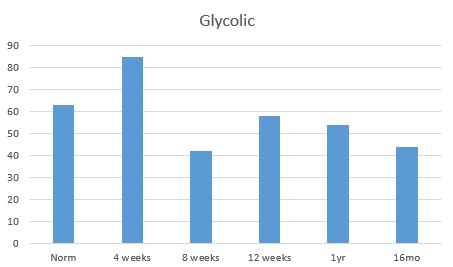
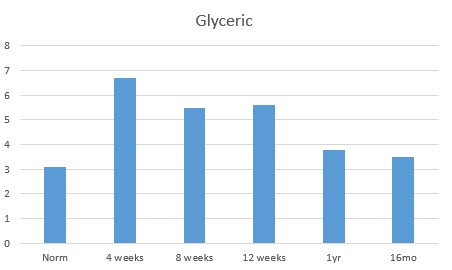
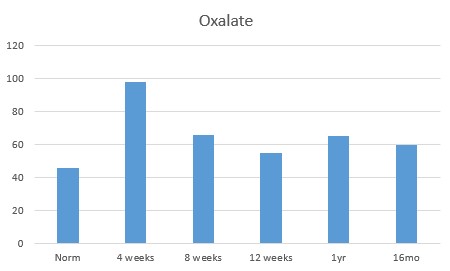
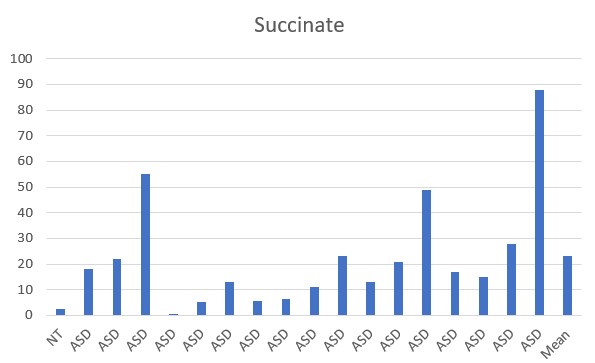
Functional vitamin B2 deficiency was seen in all the children, with various levels of elevated oxalate, lactate, and succinate.
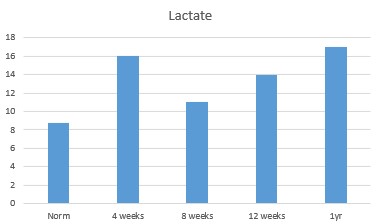
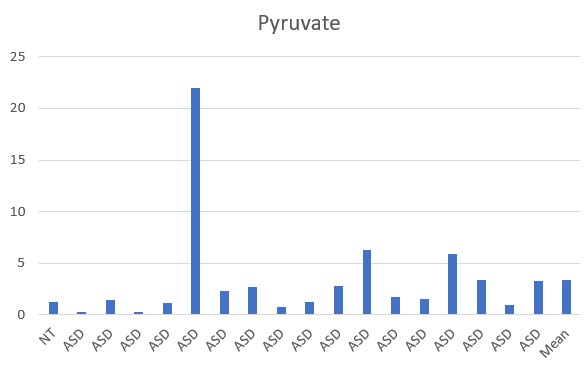
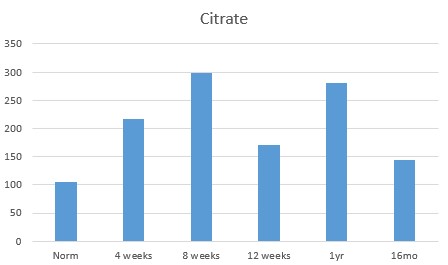
In Australia around two thirds of the children were iron deficient, suggesting that the observed functional B12 deficiencies seen were as a result of both a low iron/B12 diet and the functional B2 deficiency.
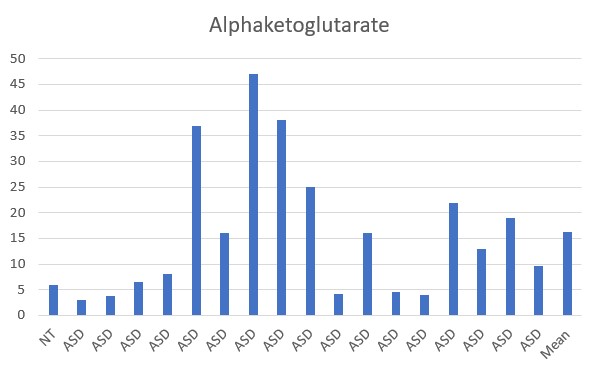
Vitamin B1 deficiency was common (9 of 10), as judged by elevated AKG, and elevated pyruvic acid. This is commensurate with a gluten-free diet, which was common in the children.

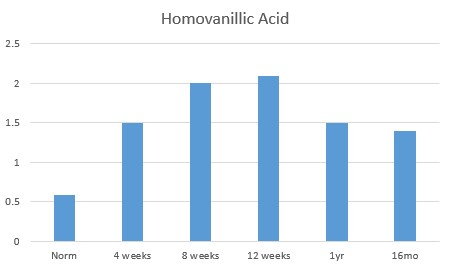
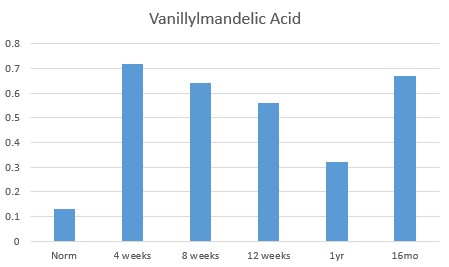
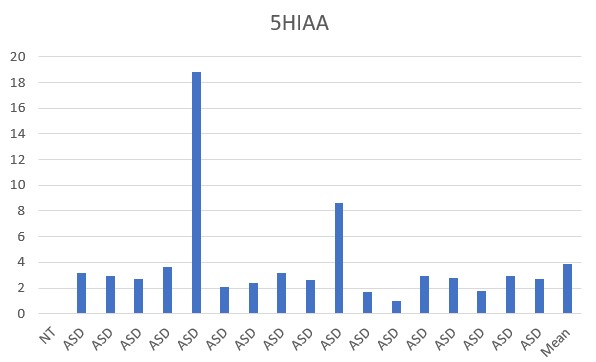
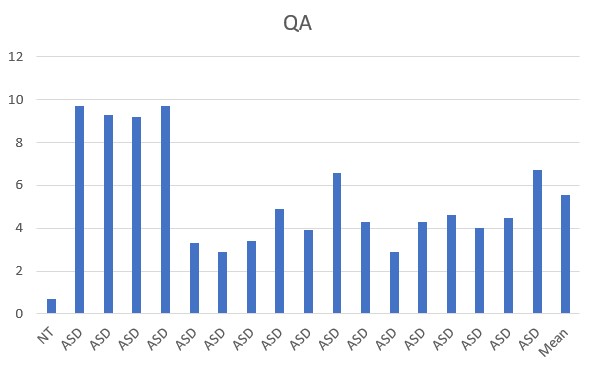

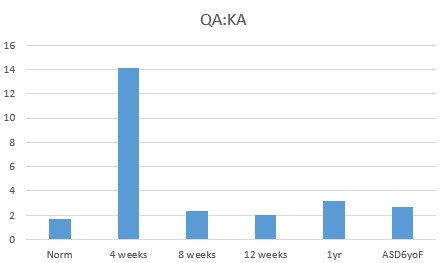
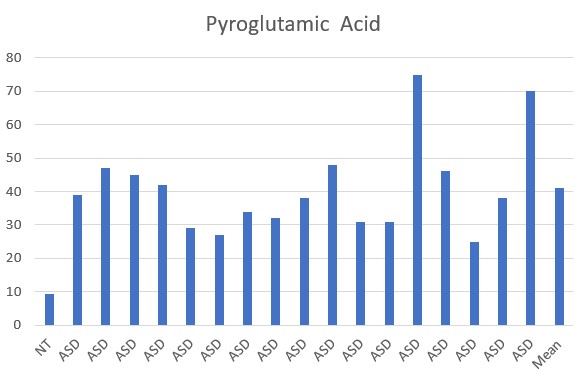
All children were functionally deficient in Methyl B12 as judged by VMA, HVA, 5HIAA, QA, and KA, with elevated pyroglutamic acid being common.
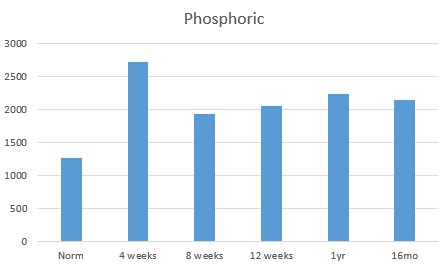
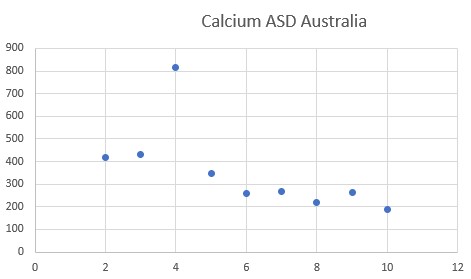
Vitamin D deficiency as judged by elevated Phosphoric acid, and reduced HMTA Calcium (NB samples are not matched)
All children showed some degree of vitamin D deficiency as judged by elevated phosphoric acid.
Vitamin D deficiency is now incredibly common worldwide, with Australia, now having an ever increasing population who are vitamin D deficient (Lips etal, 2019; Kiely and Cashman, 2018; Roth etal, 2018). Low vitamin D levels in the world population have been known for many years, now, yet few countries, including Australia have addressed this (Ben-Shoshan, 2012). Fortification of milk powder with 5 ug/day, was not enough to increase winter serum vitamin D levels to those in summer (NZ study, Green et al, 2010). Studies using 25,000 IU per day were sufficient to double serum vitamin D levels. This a long way above the RDA of 400 IU/day suggested by many government web-sites (Lossifidis etal, 20201), and suggests that use of sun-blocking agents should be greatly decreased, as too the SPF values of such sun-blocks. Low vitamin D has been associated with a wide range of conditions, including Developmental Delay, Autism, ADHD, Schizophrenia, Body dysmorphia, Neuro-regression, Regressed psychomotor development, Ricketts, and Impulsive behaviour. Why any mother would even risk having a child with low vitamin D is incredibly puzzling.
Diagnosis
ABC Weekend Breakfast - Raegan & Rocky - YouTube
Publications
Stoeva I, Peneva L, Grigorova R, Vassileva B, Brumm H, Grüters A. Neonatal TSH screening--an instrument of iodine supplementation monitoring in Bulgaria in comparison to Berlin--a preliminary report. Exp Clin Endocrinol Diabetes. 1997;105 Suppl 4:51-4. doi: 10.1055/s-0029-1211933. PMID: 9439916.
Delange F. Iodine deficiency in Europe and its consequences: an update. Eur J Nucl Med Mol Imaging. 2002 Aug;29 Suppl 2:S404-16. doi: 10.1007/s00259-002-0812-7. Epub 2002 Jun 1. PMID: 12192540.
Møllehave LT, Eliasen MH, Strēle I, Linneberg A, Moreno-Reyes R, Ivanova LB, Kusić Z, Erlund I, Ittermann T, Nagy EV, Gunnarsdottir I, Arbelle JE, Troen AM, Pīrāgs V, Dahl L, Hubalewska-Dydejczyk A, Trofimiuk-Müldner M, de Castro JJ, Marcelino M, Gaberček S, Zaltel K, Puig-Domingo M, Vila L, Manousou S, Nyström HF, Zimmermann MB, Mullan KR, Woodside JV, Völzke H, Thuesen BH. Register-based information on thyroid diseases in Europe: lessons and results from the EUthyroid collaboration. Endocr Connect. 2022 Mar 10;11(3):e210525. doi: 10.1530/EC-21-0525. PMID: 35044931; PMCID: PMC8942317.
Alehagen U, Aaseth J. Selenium and coenzyme Q10 interrelationship in cardiovascular diseases--A clinician's point of view. J Trace Elem Med Biol. 2015;31:157-62. doi: 10.1016/j.jtemb.2014.11.006. Epub 2014 Nov 27. PMID: 25511910.
Lips P, Cashman KD, Lamberg-Allardt C, Bischoff-Ferrari HA, Obermayer-Pietsch B, Bianchi ML, Stepan J, El-Hajj Fuleihan G, Bouillon R. Current vitamin D status in European and Middle East countries and strategies to prevent vitamin D deficiency: a position statement of the European Calcified Tissue Society. Eur J Endocrinol. 2019 Apr;180(4):P23-P54. doi: 10.1530/EJE-18-0736. PMID: 30721133.
Kiely M, Cashman KD. Summary Outcomes of the ODIN Project on Food Fortification for Vitamin D Deficiency Prevention. Int J Environ Res Public Health. 2018 Oct 24;15(11):2342. doi: 10.3390/ijerph15112342. PMID: 30352957; PMCID: PMC6266662.
Ben-Shoshan M. Vitamin D deficiency/insufficiency and challenges in developing global vitamin D fortification and supplementation policy in adults. Int J Vitam Nutr Res. 2012 Aug;82(4):237-59. doi: 10.1024/0300-9831/a000117. PMID: 23591662.
Roth DE, Abrams SA, Aloia J, Bergeron G, Bourassa MW, Brown KH, Calvo MS, Cashman KD, Combs G, De-Regil LM, Jefferds ME, Jones KS, Kapner H, Martineau AR, Neufeld LM, Schleicher RL, Thacher TD, Whiting SJ. Global prevalence and disease burden of vitamin D deficiency: a roadmap for action in low- and middle-income countries. Ann N Y Acad Sci. 2018 Oct;1430(1):44-79. doi: 10.1111/nyas.13968. Epub 2018 Sep 18. PMID: 30225965; PMCID: PMC7309365.
Green TJ, Skeaff CM, Rockell JE. Milk fortified with the current adequate intake for vitamin D (5 microg) increases serum 25-hydroxyvitamin D compared to control milk but is not sufficient to prevent a seasonal decline in young women. Asia Pac J Clin Nutr. 2010;19(2):195-9. PMID: 20460232.
Iossifidis S, Vaiou M, Challa A, Migdanis A, Migdanis I, Moula AI, Papageorgiou M, Kokkinos G, Deligiorgis D, Varitimidis SE, Malizos KN, Moulas AN. Use of Fortified Bread for Addressing Vitamin D Deficiency. Adv Exp Med Biol. 2021;1337:371-378. doi: 10.1007/978-3-030-78771-4_42. PMID: 34972926.
Copyright © 2018 B12 Oils. All Rights Reserved.
Reproduction in whole or in part in any form or medium without express written
permission is prohibited